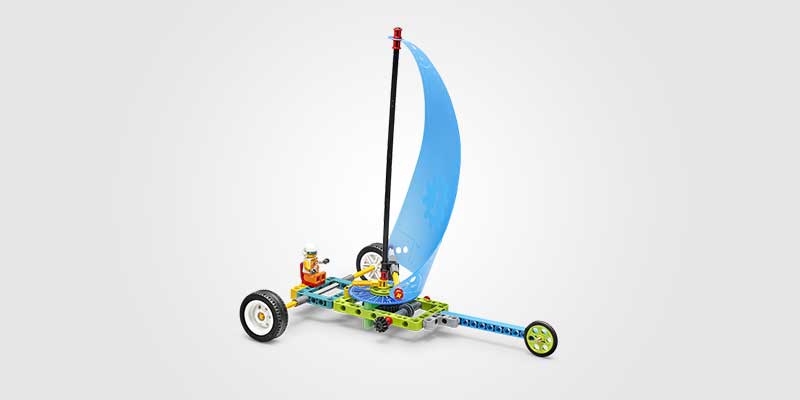For more than 40 years, LEGO® Education has collaborated with academic experts and instructors to create engaging learning activities that make academic material come to life in the classroom and enhance student engagement. They have a wide range of tangible and digital educational resources that inspire students to think creatively, reason logically, and unleash their potential to shape their own futures.
They focus on preschools in Dubai and the rest of the UAE, elementary and middle schools, and other nations from the Middle East with their solutions for teaching and hands-on learning that encourages interest in Science, Technology, Engineering, Arts, and Math (STEAM). They blend curriculum-relevant information with digital resources and are based on the LEGO® Education system.

Let us take a step-by-step walk into how to construct a Land Yacht using the LEGO® Education BricQ Motion Prime set.
Step 1: Prepare
Organizing your blocks and planning your build is the first step to any Lego® build. So, if you’re working in a team or alone you must quickly identify the tasks at hand to sort the blocks, searching for the right block and the actual joining of bricks. The preparation of the build also includes securing a perfect spot to build, since some builds tend to take time and dexterity, you must choose a spot you can engage yourself for the pre-set time by yourself.
Step 2: Build away
This step in the construction process is self-explanatory. Building ideally is an ongoing process, so if you are a first-timer, don’t worry. You don’t need to rely on previous knowledge, as the kit provides a manual to refer to for each step. Either way, the first build allows you to build in your version or some tweak that you would make to the original layout. Although sticking to the prescribed steps would yield a result in the earliest manner.
Step 3: Course correct
Just like in the sailing of a yacht, in the building of one will also require you to correct course and make amends to any structural flaws created while constructing the build. This part of the process is a step that allows your build to strengthen and become a better version of itself. The build after this step is complete. And now requires you to test it for its mettle.
Step 4: Experiment
This is the step where most of the learning occurs in your building process of a LEGO® build. You learn the physics and dynamics a build follows and you get to experiment with the limits of its function altogether. Here are a few things you can do with the Land Yacht.
Downwind
- Request that the students position their land yachts on the starting line with their backs to the spectators.
- They should be instructed to switch on the fans, let their land yachts blow downwind (directly away from the fans), and observe the movement of their craft. By adjusting the little gear, the sail angle may be optimized for the land yacht’s motion. To alter the sail’s form, the red bushings may also be shifted.
- Ask your pupils to determine the sail’s optimal form and angle in order to make the land yacht move as far as possible.
- Have them fill out their student worksheets with the optimum angle.

Crosswind
- Ask the students to position their land yachts on the starting line at a 90-degree angle perpendicular to the fan.
- See whether their land yachts shift to the side of the fan by having them switch on the fans.
- To maximize the land yacht’s movement, they will need to once again modify the sail’s angle.
- Give your pupils the task of determining the ideal sail angle and having them note it on their worksheets.
Students will be required to use their scientific inquiry abilities to demonstrate how an object’s motion changes as a result of its force and mass in the LEGO® Education BricQ Motion Prime. As students create, develop, and optimize a solution involving the collision of two objects, they will use Newton’s three laws of motion. They will improve their oral communication abilities throughout these classes as they present and analyze their solutions in group discussions, which is why this has been a tool of choice for schools and educators across cities of Dubai, and other cities of UAE along with the rest of GCC and Middle-East.

